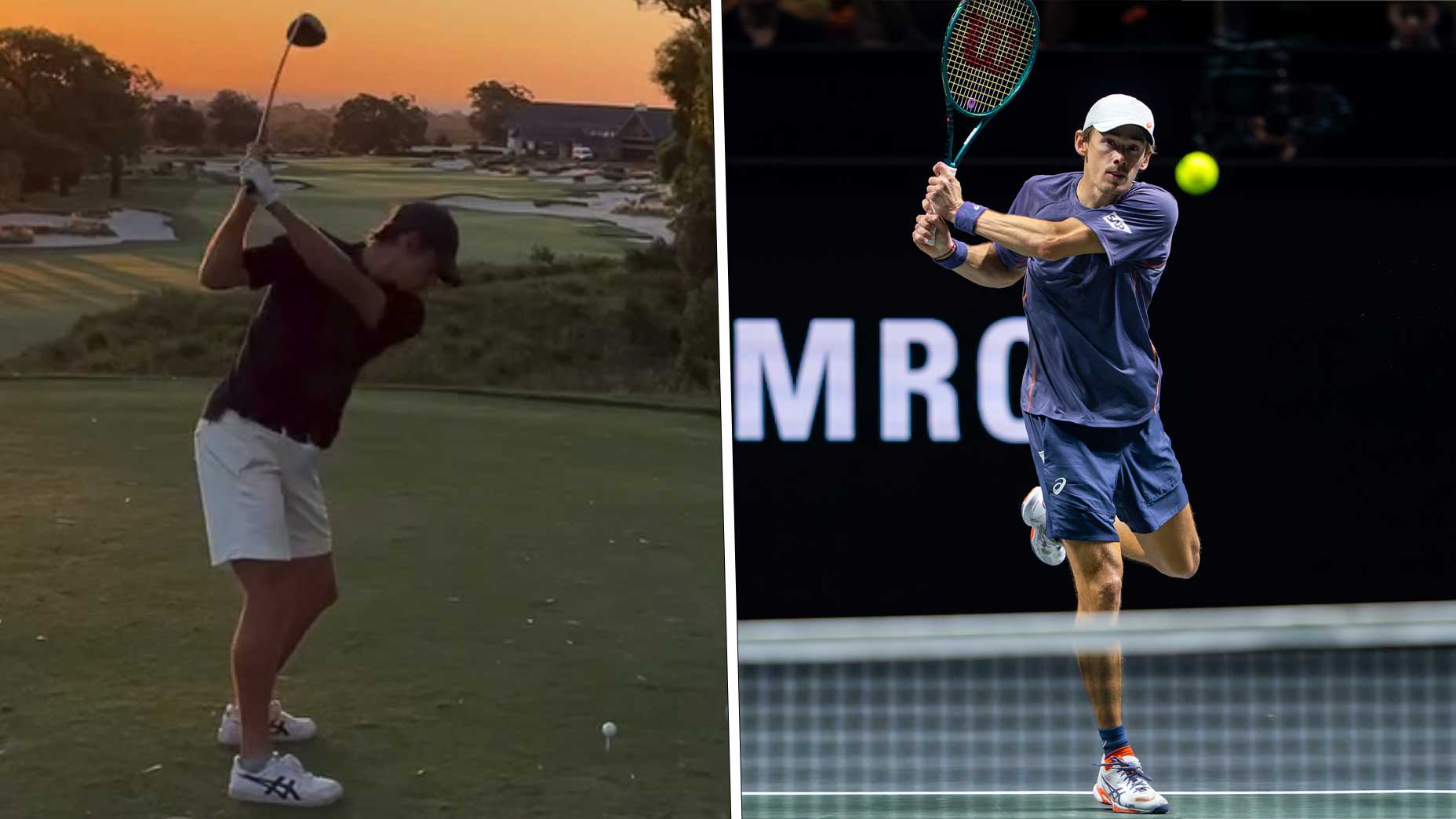 Want to hit longer drives? Use this drill to increase your attack angle
Want to hit longer drives? Use this drill to increase your attack angle
Stats prove you’re too scared on downhill putts (and other things I learned at the GOLF Top 100 Summit)
If you wanted to find out what the Golf’s Top 100 Teachers are talking about, there was only one place to be this past weekend: Pinehurst, NC.
GOLF brought the Top 100 Teachers in America to Pinehurst Resort, along with some invited guests, for a two-day learning summit to talk about what they do best, and share insights from experts in individual fields.
I want to share a few of those conversations I overheard over the course of the week, and peel back the curtain on the state of golf instruction at the highest level.
One of the smartest rooms in golf. #top100summit brings some of the best in the business together. 🙌Phenomenal line up and can’t wait to share what this event has been like. @GOLF_com pic.twitter.com/Diqh4oya16
— Cordie Walker / GolfWell (@cordie_golfwell) November 12, 2019
The most talked about session was from Mark Broadie, professor at Columbia University, and creator of the incredibly important Strokes Gained stat.
I was lucky enough to sneak out Sunday afternoon to play the back nine of No. 2 with Mark and get a summary of some of his latest findings before his session. One recent area he’s been studying is putting data to help determine the exact distance you should be rolling the ball past the hole on up hill and downhill putts.
In short: Most of us get too cautious on short downhill putts. As you can see below, Broadie found that when a pro misses a four foot downhill putt, they’re leaving themselves about 2.5 feet coming back. Average golfers, on the other hand, leave putts short far more often.
It’s great to hear that instructors are paying attention to and utilizing data like Mark’s to help inform their teaching and make sure golfers are getting the best info that’s backed up by data.
If the data is available to look at, let’s use it!

ADVERTISEMENT
George Gankas is well-liked amongst his fellow teachers and has some serious guts for teaching two of GOLF’s own in front of a whole group of Top 100 Teachers.
Drop Zone podcast hosts Sean Zak and Dylan Dethier spent about 30 minutes each working with George at the back of the Pinehurst range surrounded by 100+ of the best instructors in the game.
Props to George for doing that and showing everyone what he does in the real world.
There was a lot of hands-on intervention to get Sean and Dylan rotating better and using alignment sticks for feedback, as you’ve probably seen from some of his Instagram videos.
It was cool to see George in action live and Sean and Dylan definitely had some good things to say afterwards.
You can re-watch the lesson on Instagram.
https://www.instagram.com/p/B4vjKATlz6W/
Upcoming Lucas Wald spent time delving deep into video examples from legends of the game to talk about specific moment patterns, that can help golfers today.
Wald, blended multiple examples of past and present greats to show that the commonalities aren’t confined to single generations, which you can learn more about below.
https://www.instagram.com/p/B4ya8KWF0kO/
https://www.instagram.com/p/B4yESXtFds3/
Putting instructor David Orr had the room in full attention with his hilarious stories (and brilliant impression of Sean Foley) talking about teaching the best players in the world.
And one phrase and concepts died on Tuesday November 13, 2019: “Putters don’t travel in straight lines.”
The idea of straight-back, straight-through putting strokes doesn’t exist. The putting stroke isn’t a line, it’s an arc, because the shaft is on a plane the same way the rest of your clubs are — so stop trying to fit your stroke into that paradigm.
https://www.instagram.com/p/B40tFuqFPKS/
The golf industry is moving forward with more technology and research, but that doesn’t mean teaching is getting more complicated or technical.
One of the key aspects of the art of coaching is to take complex evidence based ideas and turn them into simple feels and feedback for students.
To be using complex biomechanics data doesn’t mean a teacher has to use complex ideas or terminology. The goal is to help people get better faster, not weigh golfers down with technical jargon. That was the ever-present theme throughout the week at the Top 100 Summit.
Pinehurst has to be one of the best places to hang out in the world. It’s the full experience, from the history and significance of course No 2 to the cool factor of The Cradle.
“Disney for golfers” is what I heard one of the presenters and leading biomechanist call it Dr. Sasho MacKenzie as we played The Cradle in near darkness 28 degrees.
I had not been to Pinehurst before and it definitely lived up to the hype. I’m definitely going back to experience more golf in this area and this has to go down as one of the best trips of 2019.
So many good conversations and people in place made it the perfect spot to spend the weekend.
Big thank you to the GOLF crew for having me come down to the event and make sure to watch for some of the 8+ podcasts on the Golf Science Lab feed soon.

ADVERTISEMENT





